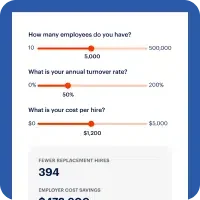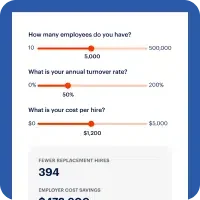When we talk about the financial crisis in K-12 education, the focus often lands on teachers.
However, a school is a complex ecosystem, and a growing body of evidence shows that the entire support system is struggling.
The dedicated individuals who keep our schools running such as bus drivers, administrative assistants, cafeteria staff, and custodians face significant financial hurdles, often with low compensation.
The Financial Reality of School Support Staff
Essential school staff are part of the foundation of schools and key to their success and safety. They ensure students arrive safely, have nutritious meals, and learn in clean, well-maintained spaces. Yet, their compensation frequently fails to keep up with the cost of living.
According to a report by the National Education Association (NEA), a significant percentage of K-12 education support professionals (ESPs) earn less than a living wage.1 According to NEA research, 38% of ESPs working in K–12 schools earn less than $25,000, and 12.5% earn less than $15,000.
The ripple effects of this low pay are significant:
- Financial Stress: Low wages and inconsistent pay schedules force staff to live paycheck to paycheck, leading to high levels of financial anxiety.
- Reliance on Assistance Programs: Many K-12 support staff report utilizing assistance programs to cover basic needs.2
- Working Multiple Jobs: To bridge the gap, many are forced to take on second or even third jobs, leading to burnout and reduced focus during their school hours.
Why Schools Must Address Staffing Shortages
These factors are among the issues contributing to the widespread staff shortages, which have hit the ranks of education support professionals (ESPs) who include school bus drivers, food service professionals, paraeducators, campus security staff, custodians, maintenance staff, and more, especially hard.3
When these areas aren’t adequately staffed, it can put a strain on the entire system. If schools want to attract and retain vital staff like bus drivers, a significant step must be taken to address their financial stress.
Offering financial wellness benefits can give school districts a competitive edge in attracting and retaining hard-to-fill roles like bus drivers, making the total compensation package more attractive.
Empowering School Staff With Financial Wellness Benefits
The good news is that school districts can provide immediate, impactful relief that goes beyond compensation and traditional benefits. Modern financial wellness platforms and the power of On-Demand Pay offer a solution.
A financial wellness benefits platform, empowered by On-Demand Pay — also known as earned wage access (EWA) — gives employees control over their money as they earn it.
1. On-Demand Pay
For a bus driver, a custodian, or a cafeteria worker living paycheck to paycheck, an unexpected car repair or medical bill can be devastating. DailyPay’s On-Demand Pay solution allows employees to access their earned pay before their scheduled payday.
- Reduces Financial Stress: The ability to access pay when needed can help staff avoid predatory payday loans or late fees on bills.
- Visibility Into Earnings: DailyPay gives users real-time visibility into their earned pay, allowing for better day-to-day budgeting and financial planning.
- Savings Tools: Features that allow staff to automatically set aside a portion of their pay for savings can help build an emergency fund, which is crucial for reducing financial vulnerability.
- Financial Wellness Educational Content: Access to in-app financial education resources and personalized financial counseling equips staff to increase their financial literacy and reduce stress.
By implementing comprehensive financial wellness resources and On-Demand Pay, school districts can show a deep, tangible commitment to the well-being of all their staff, going beyond just the classroom.
Discover how DailyPay can be key to improving hiring and retention efforts. Learn more in our total rewards eBook today!











